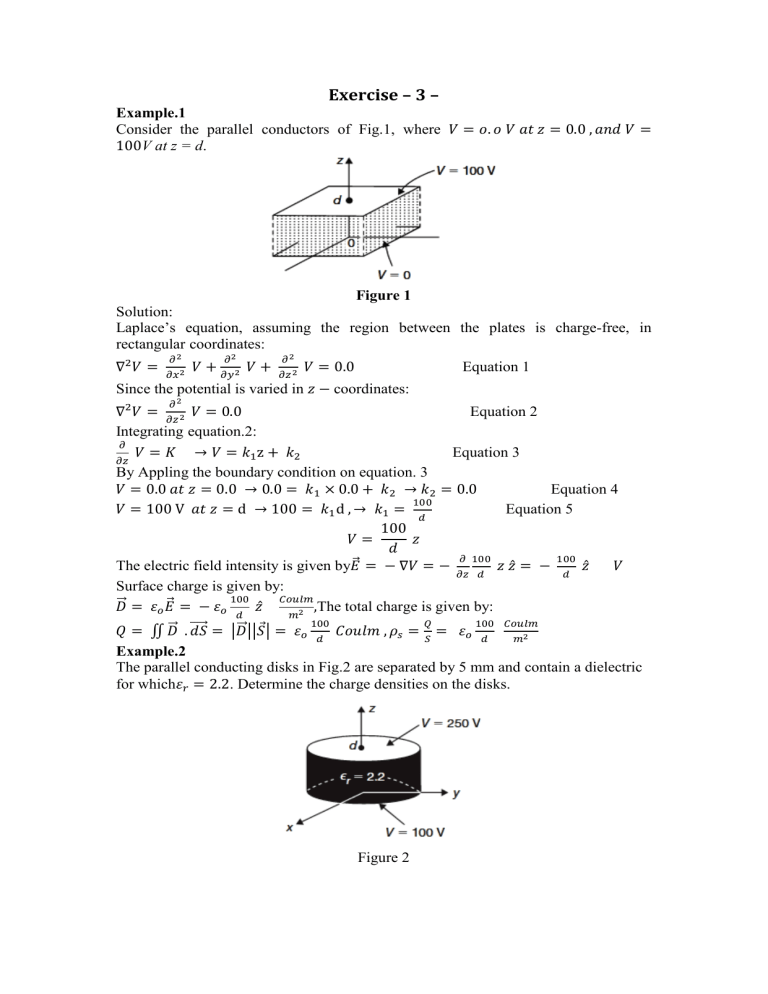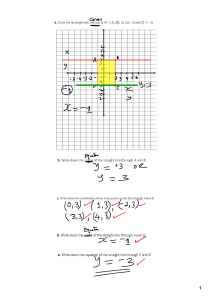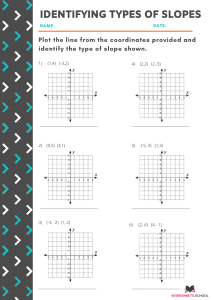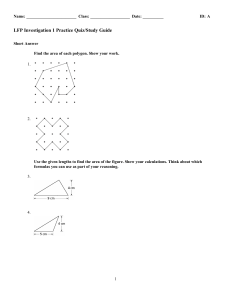Electromagnetics Exercise: Laplace's Equation & Conductors
advertisement

Exercise – 3 – Example.1 Consider the parallel conductors of Fig.1, where V at z = d. Figure 1 Solution: Laplace’s equation, assuming the region between the plates is charge-free, in rectangular coordinates: Equation 1 Since the potential is varied in coordinates: Equation 2 Integrating equation.2: Equation 3 By Appling the boundary condition on equation. 3 Equation 4 Equation 5 The electric field intensity is given by ⃗ Surface charge is given by: ⃗ ⃗ ̂ The total charge is given by: | ⃗ || | ∬ ⃗ ⃗⃗⃗⃗ ̂ ̂ Example.2 The parallel conducting disks in Fig.2 are separated by 5 mm and contain a dielectric for which . Determine the charge densities on the disks. Figure 2 Solution: Laplace’s equation, assuming the region between the plates is charge-free, in cylindrical coordinates: Equation 6 Since the potential is varied in coordinates: Equation 7 Integrating equation.2: Equation 8 By Appling the boundary condition on equation. 3 Equation 9 Equation 10 Equation 11 The electric field intensity is given by ⃗ ̂ Surface charge is given by: ⃗ ⃗ ̂ ∬⃗ ⃗⃗⃗⃗ ( ) ̂ The total charge is given by: | ⃗ || | The electric field intensity ⃗ and electric flux density ⃗ : ⃗ ⃗ ̂ ⃗ The surface charge on the upper plate and lower plate is given by: Example.3 Find the potential function and the electric field intensity for the region between two concentric right circular cylinders, where and Neglect fringing. See Fig.3 Figure 3 Solution Laplace’s equation in cylindrical coordinates: Equation 12 Since the potential is varied in coordinates: Equation 13 Integrating equation.13: Equation 14 By Appling the boundary condition on equation. 14 Equation.14 Equation 15 Equation.14 Equation 16 By substituting by equation 16 from equation 15: By substituting in equation 15 The potential is given by: V ⃗ ( ̂ Equation 17 ̂ Equation 18 ) The total charge on the inner surface is: ∬⃗ ⃗⃗⃗⃗ ⃗ |⃗ | ( ( ) )




